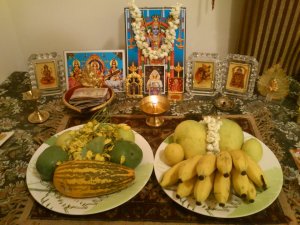A self development blog: a variety of topics that interest me, that I read about, my reactions and responses to day to day affairs in and around me will find its place here.
Saturday, August 17, 2013
Looking at Possibilities
Thursday, August 15, 2013
Independence Day
The very word conjures magic in my mind. With fascists, dictators and authoritarian regimes around the globe, proud to say that my country India stands high in a pedestal.
@ 67 we have a whole lot of achievements to our credit.
Nation building...
Self sufficiency...
Improvements galore...
White and green revolutions...
Yet, methinks the SOUL of Freedom has deluded us even now...
To achieve that we need dignified, accountable politicians who will make our visions a reality, by keeping the interest of the nation at all times...
A well oiled officialdom, who will ensure that right things happen in the right way at the right time...
And a populace of patriotic Indians who will remember the sacrifices of the freedom fighters, not just on Independence or Republic Day, but each and every day, in fact every moment... and will live together in camaraderie and achieve all success together by keeping the secular fabric of the nation intact...
Into that kind of an India let us all awake!
Let each one of us be the change we wish to see in and for our Nation - and make her truly, Sare Jehan se Achcha Hindustan Hamara...
Happy Independence Day, Folks!!!
Tuesday, July 23, 2013
Facing the Book!
Monday, July 22, 2013
Guru Poornima Thoughts
गुरु साक्षात परं ब्रह्म तस्मै श्रीगुरवे नमः ॥ Gurur Brahma Gurur Vishnuhu Guru Devo Maheswaraha
Guru Saakshaat Parabhrahma Tasmai Sri Gurave Namaha ||
Sunday, July 21, 2013
A fan of Online Learning
- Colour filtering
- Choosing effective search words
- Word order matters
- Use of these in searching: site; file type [pdf; doc; txt]; symbols like –, +; and words like define, OR etc.
- Search by image
- Shortcuts like date/time range
- Verifying authenticity of information

- use various synchronous & asynchronous web tools to communicate with colleagues worldwide,
- interact through e-mail, text chat, voice chat, among others,
- reflect on and define our mentoring skills through exchange with peers,
- discuss possibilities of implementing the skills in our communities of practice.
The Sky is the Limit
- Nurture a good element of curiosity. It is this CQ – Curiosity Quotient – that enables one’s quest for continuous learning.
- Be passionate about teaching (read: about what you do). Well, Thomas L Freidman in his paean to globalization, The World is Flat, calls this PQ – Passion Quotient – and even argues that it is more important than IQ.
- Explore. The World Wide Web is full of opportunities to learn and hone our skills and practices. At the same time be perceptive about what is authentic and what is not.
- Enrol. Massive Open Online Courses or MOOCs and enrich your awareness about anything that interests you from History of Rock music to Volcanic eruptions. Many of these courses are offered by universities like Stanford and MIT and are mostly free of cost. You can look for courses in www.coursera.org and www.udacity.com. Edmodo also features interesting courses for professional development.
- Find time. Time is always at a premium. You must find time for your up skilling – you owe this to yourself as a professional.
- Persevere. Don’t give up. It might be challenging at times. It is these challenges that make or break people.
Wednesday, July 17, 2013
Memories of Karkadakam
Today is the 1st day of Karkadakam, the last month according to the traditional Malayalam calendar. The Malayalam calendar is called Kollavarsham (Kollam Era) and accordingly we are in year 1188. Though Medom is the first month according to the astronomical calendar, the 1st of Chingam (the next month after Karkadakam) is considered as the beginning of the New Year after Kollavarsham was adopted as the regional calendar.
My childhood memories of Karkadakam are that of non-stop rains. It rained, and rained and rained. I remember, while travelling by public transport to school, the roads used to be covered with water along with the paddy fields on both sides. There would only be sheets of water and it was hard to distinguish what what was road and what was not! By the time we reached school, we would be dripping wet. And we remained so for the whole day. School timings were from 10.00 am – 4.00 pm and a change into real dry clothes would be possible only after reaching home by about 5.00 pm! Probably it is those tough experiences that has made us take life head on.
Karakadakom is known as Kalla Karkadakom, meaning a black month – an inauspicious one. No auspicious event would be held – the weather was never conducive for that. The month also brought in its trail copious rains, troubles and travails to the peasants who just depended on farming and agricultural produce. The incessant rains rendered them with no work. And that meant no money. The damp weather forced people to be indoors. This was also the time when people fell ill. So, Karkadakom brought in its wake poverty, illness, and hardships. It is to beat this negativity in the air that temples and homes reverberated with the chant of Ramayana. Prayers were recited to clear the cobwebs in the mind and bring clarity and serenity to the soul. Karkadakom thus also got the name, Ramayana month. It is also believed that Maharshi Valmiki completed penning that immortal epic in this month.
Another memory is that of a massive operation clean at home. This happens on the eve prior to the first day of Karkadakam. All families were into agriculture in our small village of Pallavur in Palakkad. We were no different. The cleaning operation was a tradition. Our home, including the granary, would be cleaned meticulously. This was symbolic of removing Chetta, (Jheshta Bhagavathy) who was considered to be the presiding deity of all that is dirty and decadent. We would then put it all in bamboo winnowers called Murams. There was no trace of plastic those days! Everything from grocers came covered in newspaper. Throwing away these biodegradable materials to the uninhabited parts of the huge compounds or outside it was accompanied by chants, “Chetta go, Shibothi come” (Chetta po, Shibothi vaa). Shibothi seems to be the the truncated version for Sree Bhagavathy, a semantic change that was necessitated by the excessive length of the word. And Sree Bhagavathy was worshipped as the harbinger of everything that is good and prosperous - especially in the wake of the new year being round the corner – in Chingam, which also brings the wonderful egalitarian festival of Onam. The entire month of Karkadakam sees the worshipping of Sree Bhagavthy, the Goddess of Prosperity. Lamps are lit in the morning and evening in the Machu (household shrine).
A view of the fields behind our home
Then gradually rains became scant. This year of course has been an exception. Paddy fields are all being filled in and converted into house plots. We have sold our paddy field too as it has become very difficult to manage – with practically no labour available to do farming chores. And today as I sit here in the date-palm fringed land, I cannot but long for these renewing practices we had in the past, in my home town which is fringed with palms of a different kind – the Borassus flabellifer, the Asian Palmyra palm.

Today, things are very different. I really don’t know if all homes in Palakkad engage in removing Chetta and inviting Shibothi. My mom meticulously does it. I am so grateful she does it – at least our children are familiar with all the traditions we have had and she has never let it slide into a mere ritual. And it is my resolve to continue to engage in them in years to come too so that these nurturing practices don’t die a gradual death.
Monday, July 1, 2013
The Challenge of our Education System
Seth Godin in his Stop Selling Dreams quips: “The current (educational) structure, which seeks low-cost uniformity that meets minimum standards, is killing our economy, our culture, and us.”
Godfrey Canada in his Ted Education Talk, “Our Failing schools: Enough is Enough”, asks vehemently, “Why is it that when we had rotary phones, when we were having folks being crippled by polio, that we were teaching the same way then that we're doing right now?”
http://www.ted.com/talks/ken_robinson_says_schools_kill_creativity.html
http://www.sethgodin.com/sg/docs/stopstealingdreamsscreen.pdf
http://www.ted.com/talks/geoffrey_canada_our_failing_schools_enough_is_enough.html
Doodle Courtesy: http://sunnibrown.com/doodlerevolution/showcase/ted-schools-kill-creativity/
Friday, June 14, 2013
A Requiem
Today when I read in the Times of India about the impending demise of 160 year old telegram in India, I thought that a memorial service is in order. According to the report, Bharat Sanchar Nigam Limited will discontinue its telegraph services shortly. The last telegram will be sent on 15th July 2013. One more addition to what tomorrow’s students have to study as it becomes part of history.
Indian Telecommunication industry which is today touted to be one of the fastest growing one (second only to China, of course) began with the pioneering and experimental electric telegraph between Calcutta, the then capital of India, and Diamond Harbour. Subsequently the East India Company popularised it throughout the nation. The vastness of the country necessitated a separate department which came into being in 1854. One unforgettable name in this development is that of Dr. William O’Shaughnessy.
The Dot Dash Machine! It’s becoming history!!
I remember that any telegram that was served was actually received with a lot of anxiety and trembling, so much so that in many cases receiving a telegram was synonymous with receiving bad news – death, accident, illness and so on – unless the circumstances were otherwise. The weddings of my aunts and uncles saw us receiving so many telegrams with messages. There used to be a code for the telegrams booked and conveyed at the sender’s end – “phone-o-grams” as these messages were called in those days. 4 was for “A Happy New Year to You”; 8 – “Best Wishes for a long and Happy Married Life”; 10 –“Congratulations on your Success in the Examination”; 23 -“Best Wishes for your Success in the Examination”; 100 – “Our Deepest Condolence” and so on. It had messages for every possible occasion – festivals like Diwali, Id, Guru Parb, Navroze, Onam, Christmas, occasions like new arrival (of a baby), birthday, housewarming, successes of all kinds, superannuation, pleasant and safe journey, national celebrations like Independence and Republic days, and speedy recovery from an illness / after an accident. There was even one for the Thread ceremony!!
Even for my wedding in 1983, I remember getting only telegrams for best wishes from those near and dear ones who could not attend the function. Those days Archies, Hallmark and Paper Rose and the like were hardly around in India – and definitely not in Palakkad! I remember my grandfather and my Dad going through each one of telegrams carefully and making note of all the names who had sent in the greetings. The unwritten rule was that we have to reciprocate when there was an occasion in the sender’s family.
Another occasion when I received a telegram was when Tata Tea informed me of the interview at Munnar. I had applied for the post of a teacher at their High Range School, Mattupatti, Munnar. Once the interview was over, they asked me to come over once again for a medical check up, again via telegram. (Appointments would be offered only if the medical tests were okay.) I remember that they communicated my selection and asked me to join as soon as possible, also vide another telegram. ![]()
Today, when I read the news item #, all these memories came into me. With the advent of super fast communication strategies at the wink of an eye, the click of a mouse or the touch on a touch screen, via mobile phones (Indian mobile subscriber numbers will touch 1.200 billion in 2013 according to projections!), SMSs, instant messages and emails, it is only but natural that time consuming strategies will die a sad death. The ‘dots and dashes’ of the Morse code is now on the verge of the hearing its own death knell raised by the latest gadgets courtesy a population of techno savvy digital natives, immigrants and refugees.
International Morse Code
Yet, one cannot feel sad about the passing away good old times. Information was slow to reach but life was so simple and uncomplicated. Life was full of trials and yet, everyone looked at it with hope and faith. Joys were many and sorrows were shared. Living conditions were great with fresh farm produced food, clean and clear water and lots of fresh air in our rustic countryside of Pallavur. Climate changes rarely were noticed. No preservatives. No GM or Instant food. No non stop channel discussions and live coverages. Most importantly, the Idiot Box with many of its irrational, melodramatic and silly soap operas was just not there. In short, there was nothing to pollute and sully either one’s physical or the inner being.
Alas! Those are bygone days now. And since I feel some of you will be on the same page with me on this, I use this phone-o-gram message for the requiem:
Message 100: “Our Deepest Condolence.”
PS: You have outlived all of us by living for 160 years. And have served many many millions! Blah, talk about corporate social responsibility! So, Rest In Peace. Peace that passeth all times and climes.
Image courtesy:
The Telegraph equipment: http://bit.ly/17LdBkq
International Morse Code: http://bit.ly/17LdR2M
Monday, June 10, 2013
Life in the Now
One of the most nurturing of renewal mechanisms that the human body can indulge in is Mindfulness, according to Richard Boyatzis and Melvin Smith¹. As someone who is very keen on renewing myself on a day to day basis, I find great joy when I do things mindfully. Mind you, I have not mastered it. Just aware. So trials are on to make it a part of me. For example, a walk barefoot on the green grass in the park is something I mindfully did today! Yes, in the hustle and bustle of life it is always not possible to be mindful – and that is when the mind is in autopilot. Sometimes you do things so mechanically that you don’t even realize you have done it. Doesn’t that happen to you?
I have read about mindfulness through the books of Thích Nhất Hạnh (fondly called as Thây), the Vietnamese Zen Buddhist monk and the Dalai Lama. Called in Pali and Sanskrit as smṛti / स्मृति, Mindfulness has its roots in Hinduism and later its offshoot, Buddhism. Perfected by Buddhists, it means focus, attention or awareness – a way of engaging with life and experiencing the present moment. Yet another author whose books have extolled the virtues of being mindful, The Power of Now, is Eckhart Tolle*. “Neurons that fire together, wire together”, said the Canadian Psychologist Donald Hebb. This came to be known as Hebbs axiom and going by this, the more we practice mindfulness, the more we develop neuro-pathways in the brain associated with being mindful. This makes it easier for the mind to be fully in the present moment. In today’s stress ridden existence, living in the moment makes one’s inner being resilient and activates the Parasympathetic Nervous System (PSNS), according to the studies conducted by Richard Boyatzis and team. PSNS activates a set of hormones that lower blood pressure and strengthen the immune system according to Annie McKee, Frances Johnston and Richard Massimillian.²
While mindfulness is a perfect tool to manage stress, it also helps us to create a world where we experience depth, meaning and an authentic connectedness with everything one does and how we do them.
How can we create mindfulness within us? Use our senses to the hilt. Be aware of what we see. Listen to what we hear. Sniff and experience the smell – follow our nose! What is the texture that we feel? Savour the taste – be it of the elixir of life, water, or of a grape in our mouth. Experience all these. Focus on our breath. Close our eyes. Just delve within. Watch our thoughts and let them go. Be mindful of whatever we do – bathe, brush, walk, talk or even while attending a telephone call.
Wish you a mindful journey ahead! I will also trudge along and yes, we will reach there!!
Resources:
¹ In Positive Renewal
² In Mindfulness, Hope and Compassion: A Leader’s Roadmap to Renewal
* Power of Now has a series of exercises that can take one through to experience the potent power of the Now.
Tuesday, June 4, 2013
Friday, May 17, 2013
Njavara Rice
A couple of months back I bought a kilo of Njavara rice. I was sorely tempted to buy it when I saw the dark brown unpolished rice. In the hustle and bustle of life, I somehow missed out making rice out of it. Today, being a Friday, a holiday, I did some spring cleaning. Lo, there lay the packet of rice! The menu for lunch was instantly decided. Even while washing it, the colour did not run. That told me the rice was authentic. Cooking it took longer than usual but that was not a dampener. The cooked rice had such a unique taste. Rice with ripe mango pachadi (a traditional wet dish made with ground coconut, cumin seeds, mustard seeds, green chillies and yoghurt), cowpeas dry dish (called Upperii.e. cowpeas cooked with turmeric, chilli powder and salt and garnished with fried onions and fresh coconut scrapings) and some pickle – it was a yummy and delicious lunch.
Njavara Rice, endemic to Kerala
Njavara, with medicinal properties, is an endemic rice variety of Kerala. I am proud that there are eco farms that cultivate this rice in my home district of Palakkad, in Kerala. It belongs to the Oryza genus of grass and is a wild form of the cultivated rice Oryza Sativa commonly known as Asian rice. Njavara rice has a prime place in Ayurveda – both for internal consumption as Kanji (porridge) and external use like in Njavara Kizhi which is part of Panchakarma treatment.
Njavara when consumed internally is said to remove the ills affecting the respiratory, circulatory and digestive systems of the body. It’s cultivation is just like that of paddy. A study at the Regional Agricultural Research Station, Pilicode, described Njavara as a unique cereal having high content of free amino acids. A study conducted at the Agricultural University, Vellanikkara, Thrissur said that “being a rare indigenous genetic resource of high value and unique production and quality characteristics, it is necessary that Njavara is studied thoroughly, conserved, propagated and utilised appropriately.”
Though I have heard about Njavara, I have never known much about it till I explored it today. Worse still, I had never tasted it ever till today! It is time we protected these indigenous treasures from extinction.
Tuesday, April 23, 2013
World Book Day Thoughts
Sunday, April 14, 2013
The Nostalgia of yet another Vishu
Even Nature is ready for the festivities. The Labernum is laden with flowers. Mangoes and Jackfruits green and ripe are aplenty. The Sun is bright and is almost above the line of the equator.
The eve of Vishu montages:Mummy & all of us arranging the Kani, the special arrangement of everything auspicious and yellow, so that we can view it first thing in the morning...The array of yellow coloured fruits and vegetables like mangoes, jackfruit, golden cucumber or the Kani Vellari, lemon, home grown bananas...The mirror adorned with gold chains and stringed jasmine flowers/ tulasi petals, the idol/photo of Krishna, the Kasavu Veshti, the Bhagavad Gita and everything else from raw rice to halved coconuts...The dazzling Labernum blooms aka Kanikonna... A host of other flowers to decorate the Lord from the ordinary hibiscus to the sacred Tulasi leaves and to the beautiful and enchanting Lotus flowers the Daddy will get from our Lotus Pond...The lighted lamps, the wafting fragrance of agarbathis and camphor...
Mummy waking us up one by one, covering our eyes with her hand, getting us to wash our faces without opening our eyes and then making us sit in front of the necklace adorned mirror...
Lo! You open your eyes and see your reflection in the mirror decked of course in gold and flowers...
As children the best thing to remember was the Vishu Kaineettam... (No pocket money those days. All you will get during the entire year would be a few rupees as Kaineetam, that the elders would give you!)
Then the very interesting part for children - the bursting of crackers & fireworks... (Gradually this became a much toned down affair, thanks to the awareness that child labour was rampant in the firework factories in Sivakasi and of the chemical pollution it releases into the air !)
When we had our cattle, Mummy used to take the Kani into the cattle shed for the cows to see...All reminders of times when we lived close to nature... and treated every living being with respect and love...
Then the rush of local people - kids, young and old, to collect their share of Kaineettam from Daddy...
Sumptuous feasts...
Times when all would come home for Vishu... the joy, the merriment, the bonding and the camaraderie...
Friday, April 12, 2013
Are we equipping our Students for Tomorrow’s Jobs?

Monday, March 11, 2013
Homage to the Maestro
Wednesday, March 6, 2013
Savage Ravagers
Chattering non-stop in a language that is soon losing its babyishness that would probably make her impoverished mother smile and forget temporarily the trials and tribulations of her dreary existence…
Living life in a make-believe world, pretending to make pancakes with coconut shells…Asking so many questions about things around her that will whet her curiosity…
Nimble hands getting used to handling small objects and thus perfecting her motor skills…Getting familiar with the concept of “I, me and mine…”
Boundlessly energetic and exploring world around her…
Enjoying blissful sleep huddled to her mother and waking up again to the beauty of another day...














